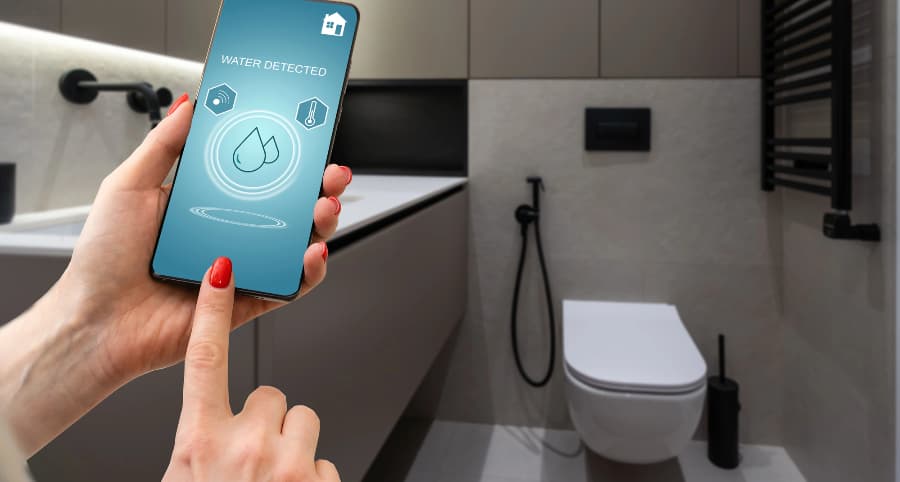How does a water sensor work and why connect one to your Hoover smart home?

One minor leak in your home can result in major issues and thousands in damage. You must protect against this danger; fortunately, there’s an easy way to do so. A water sensor is an effective, simple, and affordable solution. Explore how they work and why you ought to integrate water sensors into your Hoover smart home.
How water sensors safeguard Hoover your home
Water infiltrates homes in various ways, whether from a storm-related event, plumbing problem, appliance malfunction, or human error. No matter how it occurs, you have to know at once, and this is where water sensors come in. But how precisely do they work?
Most water sensors are conductive and operate with a pair of electrodes. When water reaches the electrodes, an electrical connection is created, triggering your alarm. You’ll also come across capacitive sensors that release an electrical field. Your alarm sounds when water contacts the conductive areas of these sensors and interrupts the field. Optical sensors utilizing infrared LED light are another possibility.
Get more protection from water sensors
Some innovative water sensors offer even more defense as they feature built-in temperature sensors. This is an outstanding benefit in preventing frozen pipes. If there’s a drastic reduction in temperature, you’ll be notified right away. Taking action before pipes rupture will shield you from water infiltration and exorbitant repair costs.
Why integrate water sensors into your Hoover smart home?
When water problems arise, you have to be notified at once. You can achieve this aim by integrating water sensors into your smart home. Whether you’re home to hear the alarm or somewhere else, you’ll receive an automatic notification on your mobile device. As an additional backup, your round-the-clock monitoring team will be informed. Each second counts in a water emergency to limit the destruction and disturbance to your family.
Where should you put water sensors?
Any spot at risk of water infiltration is an appropriate place for water sensors. Consider installing in these spots:
- Bathrooms: Attach close to tubs or in back of toilets.
- Basements: Water frequently infiltrates lower levels through leaky walls or as a result of excess rain or broken sump pumps.
- Near water heaters or appliances: Any water-connected appliance may ultimately leak.
- Underneath sinks: Water sensors are great for detecting plumbing leaks in locations not easy to see.
- Attics: Catch roof leaks early and avoid costly repairs.
Get water sensors with your Vivint smart home
Give your home the comprehensive protection it deserves with modern devices from Vivint. Our water sensors in Hoover link to your Vivint cell phone app to send you immediate notifications whenever your alarm goes off. You also enjoy built-in temperature sensors to prevent pipe freezing. Learn more about the smart home devices available in Hoover by reaching out to (205) 898-6989 today.
